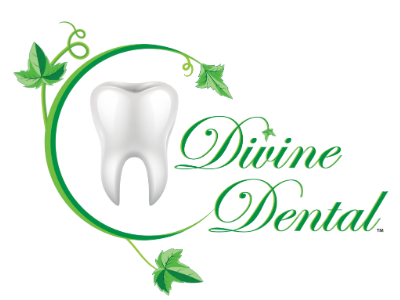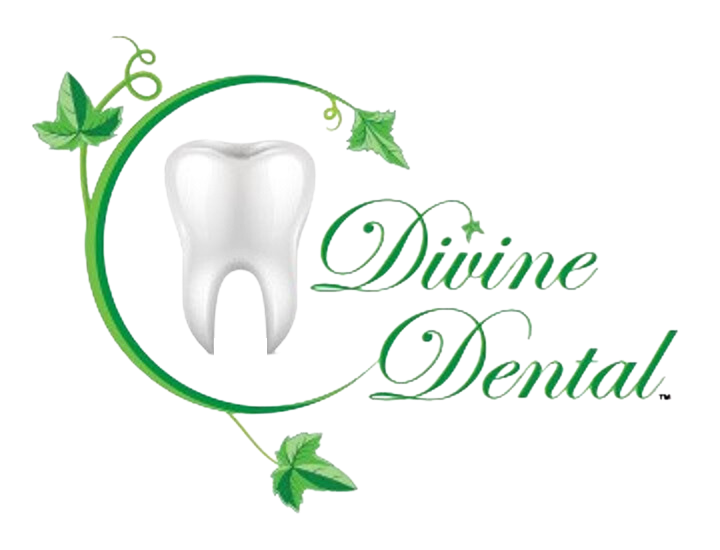Benefits of Dental Crowns: Enhancing Your Smile and Oral Health
Dental crowns are a versatile solution commonly used in dental restoration to address various tooth problems. Acting as a cap, a dental crown is placed over a tooth to restore its shape, size, strength, or to improve its appearance. They serve an essential role in dental health management, offering not just restorative benefits but also aesthetic improvements for patients with damaged or decayed teeth. With advancements in dental technology, today’s crowns can be made from a variety of materials, each offering distinct advantages that cater to the diverse needs and preferences of patients.
The application of dental crowns is a straightforward procedure carried out by dentists to protect and strengthen the structure of a tooth that cannot be restored with fillings or other types of restorations. Additionally, they are beneficial in anchoring dental bridges and can act as a protective cover for dental implants. Crowns can help in maintaining the functionality of the dental structure, allowing individuals to continue their normal eating habits without discomfort or pain. The materials used, including porcelain, ceramic, and metal alloys, are chosen based on the location of the tooth, the patient’s bite, and the color of the surrounding teeth to achieve the desired result.
Crowns not only restore the tooth to its original condition but also have long-term benefits when it comes to aftercare and maintenance. Following the crown’s placement, it’s important for patients to continue with good oral hygiene practices; this ensures the health and longevity of the crown and the underlying tooth. Regular dental check-ups are crucial to monitor the crown and to address any potential complications early on. This preventative approach contributes to the overall success and durability of dental crowns, favoring a functional and pleasing dental outcome for patients.
Key Takeaways
- Dental crowns restore and protect teeth , offering both functional and aesthetic benefits.
- They can be made from various materials tailored to the patient’s needs, ensuring a natural look and fit.
- Good oral hygiene and regular check-ups are vital to the long-term success of dental crowns.
Understanding Dental Crowns
Dental crowns restore function and appearance to damaged teeth. They are a reliable solution for a variety of dental issues.
Types of Dental Crowns
Dental crowns can be made from several materials, each with its own benefits. Metal crowns , often made of gold or base-metal alloys, are strong and highly durable. Porcelain-fused-to-metal crowns offer a balance between strength and aesthetics, featuring a metal base with a porcelain exterior. Ceramic crowns or all-ceramic crowns are popular for their natural color match, making them ideal for front teeth restorations. Lastly, zirconia crowns have emerged as a versatile choice, boasting excellent durability and a natural appearance.
Materials for Dental Crowns:
- Metal : Gold, base-metal alloys (nickel or chromium)
- Porcelain-fused-to-metal : A metal base with a porcelain layer on top
- Ceramic (All-ceramic) : Porcelain or other ceramic materials
- Zirconia : A crystalline material offering strength and a natural look
Types of crowns are chosen based on the location of the tooth, the patient’s bite, and aesthetic considerations.
Determining the Need for a Crown
A dentist may recommend a dental crown for several reasons. If a tooth is significantly decayed and unable to hold a large filling, a crown can provide stability. Crowns also protect weakened teeth from fracturing and restore already broken teeth. Additionally, after root canal therapy, crowns help seal the tooth and prevent reinfection. They are also employed for cosmetic enhancements, reshaping teeth to achieve a more desirable appearance.
Reasons for a Crown:
- To support a tooth with a large filling
- To protect a weak tooth from breaking
- To restore a broken tooth
- To cover a dental implant
- To make a cosmetic modification
- After root canal treatment
Advantages of Different Crown Materials
Dental crowns can be made from various materials, each offering unique benefits. The choice of material impacts the crown’s strength, aesthetics, and longevity.
Ceramic and Porcelain Crowns
Ceramic and porcelain crowns are prized for their natural appearance which closely mimics tooth enamel. They are particularly suitable for people with metal allergies, as all-porcelain crowns do not contain any metal alloys. Porcelain crowns are an excellent choice for front tooth restoration , due to their superior aesthetic qualities and the ability to be matched with the natural color of adjacent teeth.
Metal and Gold Crowns
Metal crowns, which can include gold or other alloys, offer exceptional durability and strength . They withstand biting and chewing forces well, making them ideal for restoring molars at the back of the mouth. Gold crowns stand out for their biocompatibility , resulting in fewer allergic reactions compared to other metal crowns. These materials typically last longer than all-porcelain crowns, often extending beyond 10-15 years with proper care.
Porcelain-Fused-to-Metal Crowns
Porcelain-fused-to-metal (PFM) crowns combine the strength of metal with the aesthetics of porcelain. The metal framework ensures long-term durability , while the porcelain exterior provides a tooth-like appearance. PFM crowns are a versatile choice and can be used for restoring both front and back teeth. However, the metal underlying the porcelain can sometimes become visible as a dark line near the gum line, especially if the gums recede.
Zirconia Crowns
Zirconia crowns are known for their exceptional strength and durability , with the potential to withstand the forces of biting and chewing without cracking or chipping. These crowns are made from zirconium dioxide, a strong ceramic that is resistant to temperature changes and wear. Zirconia crowns are well-suited for those who require a more durable solution without compromising on aesthetic appeal . They are often recommended for both front and back teeth restorations.
The Dental Crown Procedure
The dental crown procedure is a multi-step process that involves detailed work to ensure a proper fit and function of the crown. It typically requires two separate visits to the dentist.
Initial Evaluation and Preparation
During the initial visit, the dentist examines the tooth to decide if a crown is a suitable option. This usually involves taking X-rays to check the roots of the tooth and surrounding bone. The tooth receiving the crown needs reshaping to make room for the crown itself. Dental impressions are taken either using a putty-like material or digital dental impressions , to create a precise mold for the crown. Before proceeding, the dentist administers a local anesthetic to ensure the patient’s comfort during the reshaping process.
Creating the Crown Mold
From the initial impressions or digital scans, the dentist or a dental lab creates a mold for the crown. This involves selecting the right shade to match the existing teeth for a natural appearance. The molding process aims to replicate the tooth’s original structure and ensure the crown will align with the bite pattern.
Fitting the Temporary Crown
Once the tooth is reshaped, the dentist fits a temporary crown to protect the prepared tooth while the permanent crown is being made. This crown is usually secured with easily removable dental cement , allowing it to be taken out when the permanent crown is ready. Temporary crowns maintain tooth function and aesthetic appeal in the interim period.
Placement of the Permanent Crown
Once the final crown is ready, the patient will come in for their second appointment. The temporary crown is removed, and the permanent crown is test-fitted to check for comfortable bite and alignment adjustments. Then, the crown is affixed using strong, long-lasting dental cement to ensure it remains in place as the patient resumes normal dental functions.
Benefits of Dental Crowns
Dental crowns provide both functional and aesthetic solutions for patients dealing with a variety of dental issues. They serve as a cap to cover, protect, and restore the structure of teeth, while also offering cosmetic improvements.
Restorative Benefits
Dental crowns are a cornerstone in restorative dentistry , commonly used to repair teeth that have suffered from decay or a root canal . They can restore a damaged tooth’s strength and functionality after tooth decay or when a large filling compromises the tooth’s integrity. For those who have undergone a dental implant procedure, crowns act as the final component, essentially becoming the new tooth. They also aid in redistributing and alleviating the forces in your bite, which is particularly beneficial for patients with a history of grinding their teeth.
- Restores full tooth function for chewing and biting
- Alleviates excessive stress on other teeth
- Ideal for teeth that are too decayed for a simple filling
- Completes a dental implant or dental bridge procedure
Cosmetic Enhancement
Crowns are precisely designed to match the shape, color, and appearance of surrounding teeth for a natural and improved aesthetics . They offer an immediate transformation for teeth that are discolored or poorly shaped, boosting a patient’s confidence and smile. Unlike other cosmetic procedures that may require significant alteration to the existing teeth, crowns can often be placed with minimal adjustment.
- Enhances the appearance of teeth with custom shading
- Reshapes teeth for an even, uniform smile
Long-Term Oral Health Protection
One of the ultimate benefits of dental crowns is their ability to protect vulnerable teeth over the long term. By encasing the tooth, the crown shields it from further decay, sensitivity , and damage. This preventive measure can often save a patient from more invasive and costly dental procedures down the line, such as additional root canals or extractions.
- Protects against further decay and tooth sensitivity
- Defends a root canal -treated tooth from fracture
- Prevents the progression of damage caused by decay or injury
Aftercare and Maintenance
Proper aftercare and maintenance of dental crowns are essential to ensure longevity and to prevent potential complications. This care regimen involves dedicated oral hygiene practices, adherence to regular dental check-ups , and actively recognizing potential issues.
Oral Hygiene Practices
One should maintain robust oral hygiene practices to protect the integrity of the dental crown. It is advisable to brush at least twice daily using a fluoride toothpaste to prevent decay of the remaining tooth and to keep the crown clean. Flossing daily is also crucial, especially around the crown area, to avoid plaque buildup that can lead to gum disease.
| Key Activity | Purpose | Recommended Products |
|---|---|---|
| Brushing | To clean the crown and surrounding teeth | Soft-bristle toothbrush |
| Flossing | To remove plaque from the crown margins | Gentle dental floss |
| Rinsing | To reduce bacteria and remove food particles | Fluoride mouthwash |
Regular Dental Check-Ups
Individuals with dental crowns should ensure they attend regular dental check-ups . Dentists can monitor the condition of the crown and the overall oral health of the patient. These visits allow for early detection of any crown issues, such as chipping or loosening , which can then be promptly addressed.
Recognizing Potential Issues
Patients should be vigilant in recognizing signs of potential issues with their dental crowns. Symptoms such as discomfort, pain, or unusual sensations when chewing could indicate problems. One should immediately contact their dentist if they suspect that the crown is damaged or if there are signs of gum disease. Prompt detection and treatment can prevent further complications, such as the need for a dental bridge or a new crown, which could be made of various materials such as stainless steel or composite resin .
Potential Complications and Solutions
While dental crowns offer substantial benefits, patients may occasionally experience complications. This section outlines common issues and their solutions to ensure continued oral health and crown function.
Addressing Sensitivity and Discomfort
After the placement of a dental crown, sensitivity to hot and cold is a common issue. If a patient complains of sensitivity, dentists often recommend:
- Toothpaste for Sensitive Teeth : Using desensitizing toothpaste can help reduce discomfort.
- Follow-Up Care : If sensitivity persists, it might be necessary to consult the dentist. A bite adjustment or further root canal treatment could be needed if discomfort continues.
Dealing with Allergic Reactions
Allergic reactions to dental crown materials, though rare, can occur. It is critical to identify and address these reactions promptly:
- Dental Review : If a patient has a known metal allergy , alternatives like ceramic or porcelain crowns should be discussed.
- Replacement : In cases of an allergic reaction, the crown must be replaced with a material that does not cause an adverse response.
Fixing a Damaged or Loose Crown
Crowns may become damaged or loose over time due to decay , trauma, or wear and tear. Solutions include:
- Immediate Action : Visit a dentist if a crown feels loose. Delaying can lead to further damage or infection .
- Repair or Replacement : A damaged or cracked crown should be addressed immediately. Depending on the damage’s extent, the crown may be repaired or require complete replacement.
Cost and Insurance Coverage
When considering dental crowns, patients must account for the cost of the procedure and understand the extent of insurance coverage. These financial aspects are significant in planning dental work.
Estimating the Price of Dental Crowns
The cost of dental crowns varies based on the material used and the complexity of the procedure. Metal crowns , typically made from gold or other alloys, are priced between $600 and $2,500 per crown. Ceramic crowns , known for their natural color match, can cost from $800 to $3,000 per crown. Porcelain-fused-to-metal (PFM) crowns offer a blend of durability and aesthetic appeal, with costs ranging $500 to $1,500 . Zirconia crowns stand out for their strength and cost around $800 to $3,000 , whereas resin crowns are a less durable but more affordable option, generally ranging from $300 to $1,500 per crown.
Understanding Insurance Contributions
Dental insurance coverage for crowns can be complex and varies greatly by insurance plan. Most plans categorize crowns as a major procedure and may cover a significant portion of the cost, often 50–80% , after deductibles are met. Coverage depends on whether the crown is deemed medically necessary as opposed to strictly cosmetic. Patients should thoroughly review their policy details or speak with their insurance representative to understand specific contributions and out-of-pocket expenses. It’s common for insurance to have annual limits, which may affect how much cost will be covered in a given year.
What is the overall effect of dental crowns on a person's appearance?
Dental crowns significantly boost the aesthetic appeal of a smile, making it appear more beautiful and genuine, which can enhance the individual's overall facial appearance.
How do dental crowns improve the aesthetic appearance of teeth?
Dental crowns enhance the smile by seamlessly integrating with the existing teeth, providing a natural and attractive appearance.
What is the visual outcome of using dental crowns made from these materials?
The use of porcelain or ceramic in dental crowns leads to a smile that is both beautiful and authentic, blending seamlessly with the person's existing teeth.
How do these materials contribute to the aesthetic appeal of a smile?
Porcelain and ceramic are chosen for their ability to replicate the natural color and translucency of tooth enamel, which helps in achieving a more natural-looking smile.
What materials are used to make dental crowns?
Dental crowns are typically made from porcelain or ceramic.
Frequently Asked Questions
Dental crowns offer several advantages, from enhancing tooth strength to improving aesthetics. This section addresses common queries patients may have about the benefits and maintenance of dental crowns.
What are the long-term benefits of getting dental crowns?
Dental crowns provide lasting protection for damaged or weakened teeth, and when properly maintained, they can last for many years. They also help to prevent further decay or damage to the tooth structure by offering a strong, protective layer.
How do dental crowns improve oral health?
By enclosing a tooth with a custom-fit cover, dental crowns protect against decay and support damaged teeth. They ward off further deterioration and help maintain a healthy bite and jaw alignment, contributing to overall oral well-being.
What types of dental crowns offer the best durability?
Metal crowns, particularly those made from gold, palladium, nickel, or chromium, tend to offer the best durability and wear resistance. Porcelain-fused-to-metal crowns also provide a strong option with the added benefit of a more natural tooth appearance.
Can dental crowns improve the appearance of front teeth?
Yes, crowns are used to restore discolored or misshapen front teeth, offering a cosmetic solution that blends with natural teeth. Porcelain and ceramic crowns, in particular, are designed to match the color and translucency of natural teeth, enhancing a patient’s smile.
How effective are dental crowns in restoring tooth functionality?
Crowns restore functionality to damaged teeth effectively, allowing patients to chew and bite normally. They distribute the force of biting across the crown, reducing stress on the underlying tooth structure and ensuring comfortable function.
What are the considerations for maintaining dental crowns over time?
Maintaining dental crowns involves regular oral hygiene practices, such as brushing and flossing, and avoiding behaviors that can damage the crown, like clenching or grinding teeth. Regular dental check-ups are essential to monitor the condition of the crown and address any issues promptly.…



